Home>Furniture>What Is The Most Common Magnifying Lamp Magnification?
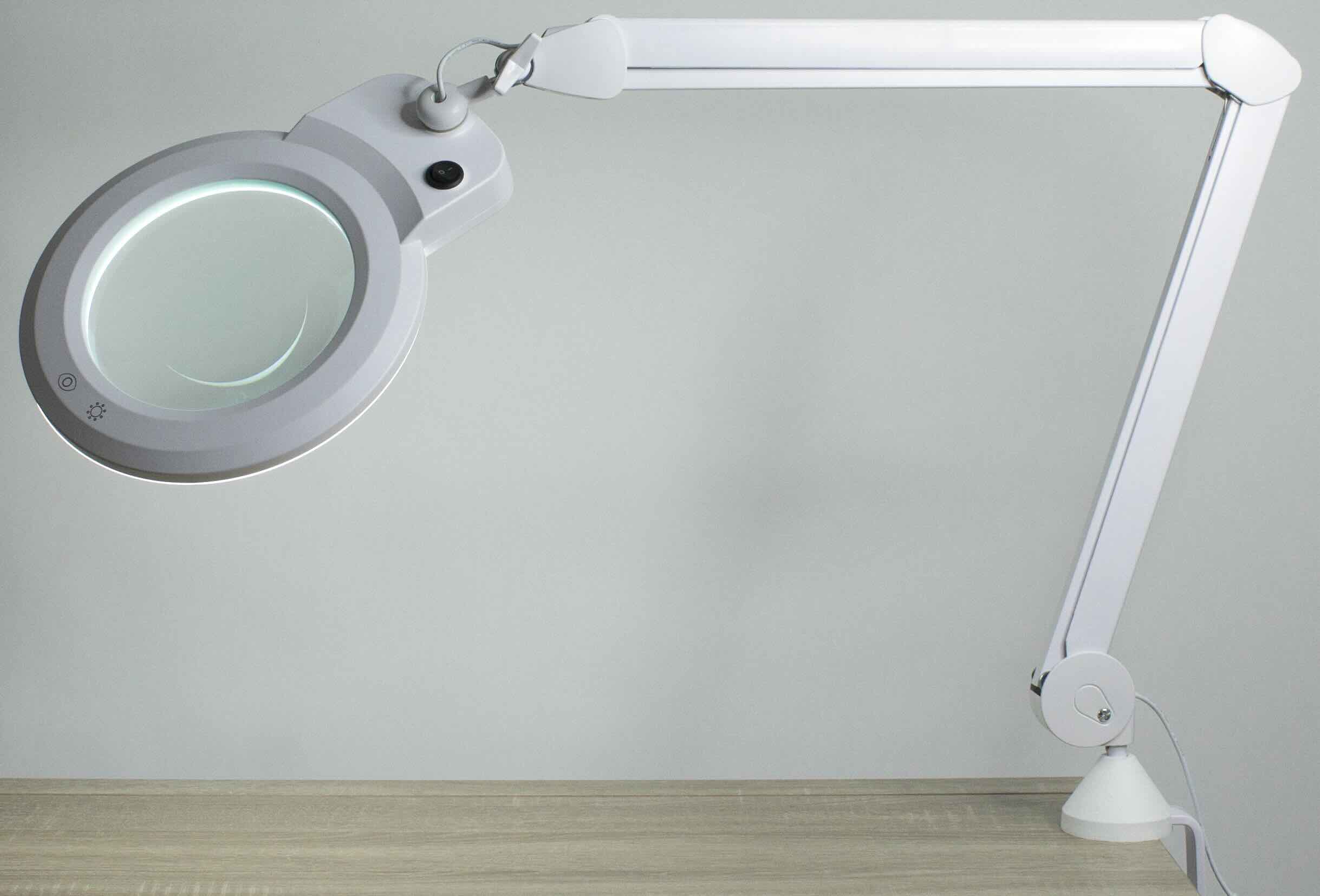

Furniture
What Is The Most Common Magnifying Lamp Magnification?
Modified: December 7, 2023
Discover the most common magnifying lamp magnification for furniture. Learn how this essential tool enhances your furniture inspections and repairs.
(Many of the links in this article redirect to a specific reviewed product. Your purchase of these products through affiliate links helps to generate commission for Storables.com, at no extra cost. Learn more)
Introduction
Welcome to the world of magnifying lamps! These nifty devices are a staple in many industries, from healthcare to hobbies, providing enhanced vision for activities that require meticulous attention to detail. Whether you’re a jeweler, a crafter, a beautician, or even a dentist, a magnifying lamp can be an invaluable tool in your work.
But with so many options available, it can be overwhelming to choose the right magnifying lamp for your specific needs. One important factor to consider is the magnification level of the lens. Magnifying lamps come in various magnification options, each offering a different degree of enlargement.
In this article, we’ll explore the most common magnifying lamp magnification options and discuss their uses. By understanding the different magnification levels available, you’ll be better equipped to select the perfect magnifying lamp that suits your needs.
Key Takeaways:
- Choose the right magnification level for your magnifying lamp based on task requirements, user vision, working distance, and field of view. Experiment with different levels to find the perfect balance for your specific needs.
- Lower magnification levels like 2x or 3x are ideal for general enhancement of vision and larger object viewing, while higher magnification levels like 8x or 10x are best for intense focus on small details. Consider the flexibility of adjustable magnification options for versatility in your projects.
Understanding Magnifying Lamps
Magnifying lamps are specialized lighting devices that combine a magnifying lens with an illumination source, typically in the form of LED lights. These lamps are designed to provide a clear and amplified view of objects, making them ideal for tasks that require precision and attention to detail.
One of the key features of a magnifying lamp is its magnification level, which determines how much the image is enlarged when viewed through the lens. Higher magnification levels offer a greater degree of enlargement, allowing users to see finer details. However, it’s important to note that higher magnification levels also come with a narrower field of view, limiting the size of the object you can see at once.
Aside from their magnification capabilities, magnifying lamps also provide adjustable lighting options, enabling users to achieve the perfect brightness for their specific tasks. This is particularly useful when working in dimly lit environments or when dealing with intricate details that require optimal illumination.
Magnifying lamps are widely used across various industries. For example, in the healthcare field, they are commonly used by dermatologists and estheticians to perform detailed skin examinations and procedures. Dentists also utilize magnifying lamps to improve visibility during dental treatments. In addition, magnifying lamps find application in the world of arts and crafts, aiding artists and hobbyists in their creative endeavors.
Now that we have a basic understanding of magnifying lamps, let’s delve into the importance of magnification and why it plays a crucial role in choosing the right lamp.
Importance of Magnification
Magnification is a key factor when it comes to choosing a magnifying lamp because it directly impacts the clarity and level of detail you can see. The primary purpose of a magnifying lamp is to enlarge objects, allowing you to examine them more closely and accurately.
Having the right level of magnification is essential for a variety of tasks. Whether you’re working on intricate jewelry designs, reading tiny print, or inspecting delicate electronic components, a magnifying lamp can greatly enhance your visual acuity and make your work easier and more efficient.
One of the main benefits of an adequate magnification level is the ability to spot and correct small errors or imperfections with ease. If you’re a jeweler, for instance, a higher magnification level will enable you to identify tiny flaws in gemstones or fine details in intricate designs. This level of precision can significantly improve the quality of your work and ensure client satisfaction.
Magnification is also vital for individuals with visual impairments or aging eyes. As we age, our eyes may experience reduced acuity and difficulty focusing on up-close tasks. Magnifying lamps can compensate for these issues by enlarging objects, allowing individuals to continue performing tasks such as reading, sewing, or model-building with ease and comfort.
Furthermore, magnification can help reduce eye strain and fatigue caused by prolonged periods of concentration on small objects. By magnifying the view, you can maintain a more relaxed and comfortable posture while working, reducing the risk of eye strain and other associated discomfort.
By now, it should be clear that magnification plays a crucial role in determining the effectiveness and usability of a magnifying lamp. Now let’s explore the various factors to consider when choosing a magnification level for your specific needs.
Factors to Consider in Magnification
Choosing the right magnification level for your magnifying lamp is essential to ensure optimal performance and usability. Several factors should be taken into consideration when determining the appropriate magnification for your specific needs:
- Task Requirements: Consider the nature of the tasks you will be performing. Are you working on small, intricate details or larger objects? The level of detail and precision required will directly impact the ideal magnification level. For tasks that involve fine craftsmanship, such as jewelry making or circuit board repair, a higher magnification level may be necessary. Conversely, tasks that involve larger objects or a broader view, such as reading or painting, may require a lower magnification level.
- User Vision: Your own vision capabilities should also be taken into account. If you have any visual impairments or difficulties focusing up close, a higher magnification level may be advantageous. Additionally, consider factors like whether you wear glasses or contact lenses and whether the magnifying lamp can be adjusted to accommodate them.
- Working Distance: The distance between your eyes and the object you are examining, known as the working distance, is another important factor. Higher magnification levels typically have a shorter working distance, meaning you need to be closer to the object for it to come into focus. This may be inconvenient or uncomfortable for some users. Therefore, ensure that the working distance of the magnifying lamp aligns with your working preferences and comfort level.
- Field of View: Consider the size of the field of view provided by the magnifying lamp. Higher magnification levels often come with a narrower field of view, limiting the area you can see at once. While this may not be a concern for tasks that require intense concentration on small details, it can be cumbersome for tasks that necessitate a broader view.
- Flexibility and Versatility: Some magnifying lamps offer adjustable magnification levels, allowing you to switch between different options depending on the task at hand. This flexibility can be extremely beneficial, especially if you work on a variety of projects or require different levels of magnification throughout the day.
By considering these factors, you can determine the ideal magnification level that suits your specific requirements and working style. Now let’s explore the most common magnification options available for magnifying lamps.
Common Magnifying Lamp Magnification Options
Magnifying lamps are available in a range of magnification options, each offering a different level of enlargement. The most common magnification levels found in magnifying lamps include:
- 2x Magnification: This is the lowest magnification level commonly available in magnifying lamps. It provides a mild enlargement, suitable for tasks that require a general enhancement of vision without intense focus on small details. 2x magnification is ideal for reading, writing, and other tasks that involve larger objects.
- 3x Magnification: The next step up is 3x magnification, providing a slightly higher level of enlargement. This level is often recommended for tasks that require a moderate degree of detail, such as embroidery, model building, or basic circuit board assembly.
- 5x Magnification: Moving up to 5x magnification, we enter the realm of more intricate work. This level of enlargement is suitable for more demanding tasks that necessitate a high level of precision, such as jewelry making, watch repair, or intricate painting.
- 8x Magnification: With 8x magnification, we enter the range of high-powered magnification. This level of enlargement is ideal for tasks that require an extremely detailed view, such as examining small electronic components or conducting microsurgery in the medical field.
- 10x Magnification: Ten times magnification is commonly used in professions where extreme precision is paramount. This level of enlargement is beneficial for tasks like inspecting gemstones, performing intricate dental procedures, or closely examining small text or labels.
- 12x Magnification: At the highest end of the magnification spectrum, we have 12x magnification. This level offers an extremely detailed view and is typically utilized in highly specialized fields where the minutest of details must be scrutinized, such as forensic analysis or certain scientific research.
Keep in mind that the actual level of enlargement may vary slightly depending on the specific magnifying lamp model and lens quality. It is always advisable to test different magnification levels firsthand if possible to gauge their suitability for your intended tasks.
Now that you are familiar with the common magnification options available, it’s time to consider how to choose the right magnification level that best suits your needs.
2x Magnification
2x magnification is the lowest level of magnification commonly found in magnifying lamps. It provides a mild enlargement, making it suitable for tasks that require a general enhancement of vision without intense focus on small details.
This level of magnification is ideal for activities like reading books, magazines, or newspapers. It allows for easier reading and reduces eye strain, particularly for those with visual impairments or difficulty seeing smaller print.
In addition to reading, 2x magnification is also useful for activities that involve larger objects. It enables you to have a closer look at photographs, maps, or artwork, bringing out finer details that may have been missed otherwise.
For hobbies like cross-stitching or knitting, 2x magnification can aid in following patterns and ensuring accurate stitches, especially for intricate designs or smaller thread counts.
Furthermore, 2x magnification can be beneficial in a variety of everyday tasks. Whether you need to examine labels on medication bottles, inspect household items for serial numbers or markings, or even perform basic repairs around the house, a magnifying lamp with 2x magnification can make these tasks easier and more precise.
It’s important to note that while 2x magnification provides a moderate level of enlargement, it may not be suitable for tasks that require intense focus on small details. If you are working on highly intricate or precision-based activities, you may need to consider higher magnification levels for optimal results.
Overall, 2x magnification is an excellent starting point for those seeking a general enhancement of vision and greater comfort in daily activities. It offers a mild enlargement that can greatly improve visual acuity and reduce strain on the eyes.
Now that we’ve explored 2x magnification, let’s move on to the next common magnification level: 3x magnification.
3x Magnification
3x magnification is the next step up from 2x magnification and offers a slightly higher level of enlargement. This level of magnification is commonly found in magnifying lamps and is suitable for tasks that require a moderate degree of detail.
One of the primary uses of 3x magnification is in hobbies and crafts that involve intricate work. If you enjoy activities like embroidery, beading, or model building, a magnifying lamp with 3x magnification can greatly enhance your precision and accuracy. It enables you to see finer details in your projects, ensuring that every stitch or piece is placed correctly.
For individuals who enjoy painting or drawing, 3x magnification can be beneficial when working on intricate designs or adding precise details. It allows you to see the subtleties of color and texture, enhancing your overall artistic process and resulting in more refined artwork.
In addition to creative pursuits, 3x magnification is also useful in various professional fields. Dentists, for example, may utilize a magnifying lamp with 3x magnification to improve visibility during dental procedures, enabling them to work with fine precision and accuracy.
For those working with electronics or small circuit boards, 3x magnification can aid in identifying and repairing delicate components. It helps to clearly see the intricate connections and markings on the circuit board, ensuring accurate troubleshooting and repair.
If you enjoy reading small print or working with detailed paperwork, a magnifying lamp with 3x magnification can make the task easier and more comfortable. It allows for a clear view of fine print, reducing eye strain and enabling you to navigate through dense documents with ease.
Overall, 3x magnification strikes a good balance between moderate enlargement and a broader field of view. It is suitable for tasks that require a reasonable level of detail without sacrificing the ability to see a larger area at once.
Now that we’ve explored 3x magnification, let’s move on to the next common magnification level: 5x magnification.
The most common magnifying lamp magnification is 2x or 3x, which is suitable for general tasks such as reading, crafting, and detailed work.
5x Magnification
5x magnification is a level of magnification commonly found in magnifying lamps that offers a higher degree of enlargement compared to 3x magnification. This level of magnification provides a significant increase in detail, making it ideal for tasks that require a more precise view of small objects.
One of the primary uses of 5x magnification is in jewelry making and repair. Jewelers often rely on magnifying lamps with 5x magnification to examine gemstones, intricate metalwork, or detailed engravings. This level of magnification allows for a clear view of the fine facets and subtle imperfections within the gemstones, ensuring accuracy and quality in their work.
Watchmakers also benefit from 5x magnification when working with tiny watch parts and mechanisms. With this level of magnification, they can inspect the intricate details of the watch movements and make precise adjustments or repairs as needed.
For individuals involved in scientific research or laboratory work, a magnifying lamp with 5x magnification can provide enhanced visibility of small specimens or samples. This level of magnification allows for detailed observation, aiding in accurate analysis and data collection.
Additionally, 5x magnification is beneficial for hobbyists and craftsmen working on projects that involve miniatures or intricate models. Whether you enjoy building and painting miniature figures or constructing detailed dioramas, a magnifying lamp with 5x magnification enables you to see the tiny details and achieve a higher level of precision in your work.
Medical professionals, particularly dermatologists and estheticians, may also utilize a magnifying lamp with 5x magnification to examine skin conditions, perform delicate procedures, or analyze individual pores. This level of enlargement enhances their ability to identify and treat specific skin concerns with greater accuracy.
While 5x magnification provides excellent detail, it’s important to keep in mind that the working distance may be shorter compared to lower magnification levels. Users may need to be in closer proximity to the object for optimal focus and clarity.
With its increased level of enlargement and detail, 5x magnification is perfect for tasks that require precision and attention to fine details. Now, let’s move on to the next common magnification level: 8x magnification.
8x Magnification
8x magnification is a higher level of magnification commonly found in magnifying lamps, offering even greater enlargement and precision compared to lower magnification levels. With 8x magnification, you can examine objects in intricate detail and focus on the tiniest of elements.
One of the primary uses of 8x magnification is in the field of electronics and circuit board repair. When working with small electronic components, such as tiny resistors or capacitors, an 8x magnification level provides a clear view of the intricate connections and markings on the circuit board. This allows for precise troubleshooting and repair.
For professionals involved in microsurgery or intricate medical procedures, an 8x magnification level is essential. Surgeons, dentists, and dermatologists rely on magnifying lamps with 8x magnification to ensure a high level of precision in their work. It allows them to see fine details on a small scale and perform delicate procedures with utmost accuracy.
8x magnification is also beneficial for individuals who work with highly detailed crafts or miniatures. From model builders to dollhouse enthusiasts, this level of magnification enables them to focus on the intricate details of their projects, achieving a level of realism that would be otherwise difficult to achieve.
Professions in the field of gemology and jewelry inspection greatly benefit from 8x magnification. When grading gemstones or examining intricate jewelry designs, jewelers rely on magnifying lamps with 8x magnification to see even the tiniest imperfections or facets in the gemstones.
In addition, individuals engaged in forensic analysis or scientific research utilize a magnifying lamp with 8x magnification to examine minute details and gather accurate data. The increased level of enlargement aids in identifying crucial evidence or analyzing tiny samples in their respective fields.
While 8x magnification provides an exceptional level of detail, it’s important to note that the working distance may be shorter compared to lower magnification levels. Users may need to be in closer proximity to the object for optimal focus and clarity.
Overall, 8x magnification is perfect for tasks that demand an extremely detailed view of small objects. It allows for precise examination and working with intricate elements, making it an invaluable tool in various professions and hobbies.
Now that we have explored 8x magnification, let’s move on to the next common magnification level: 10x magnification.
10x Magnification
10x magnification is a high level of magnification commonly found in magnifying lamps, providing an even greater degree of enlargement compared to lower magnification levels. With 10x magnification, you can examine objects with exceptional detail and precision, making it ideal for tasks that require intense focus on small elements.
One of the primary uses of 10x magnification is in the world of gemology. Gemologists rely on magnifying lamps with 10x magnification to accurately grade gemstones and identify any flaws or inclusions. This level of magnification allows for a meticulous examination of the gemstone’s characteristics and quality.
Microbiologists, chemists, or professionals working in scientific research often utilize magnifying lamps with 10x magnification. This level of enlargement is beneficial when analyzing microscopic samples or observing cellular structures. It enables detailed observation and makes it easier to document and analyze findings.
For individuals working with small electronic components or circuit boards, 10x magnification is essential for precise inspection and soldering. Whether it’s identifying tiny connections or verifying the quality of solder joints, this level of magnification aids in correctly interpreting the intricate details of the circuitry.
In the field of dentistry, 10x magnification is commonly used by dental professionals during intricate procedures and examinations. It enables them to closely observe teeth, gums, and other oral structures with meticulous precision, leading to improved diagnosis and treatment outcomes.
10x magnification is also highly beneficial for watchmakers and horologists. When working with miniature watch parts and intricate movements, this level of enlargement allows for a detailed inspection and precise adjustments necessary for accurate timekeeping.
Artists who specialize in miniature painting, such as those who paint miniature figures or intricate landscapes, often rely on magnifying lamps with 10x magnification. It helps them achieve a high level of detail and precision in their artwork, capturing the intricacies of texture, color, and fine brush strokes.
While 10x magnification offers exceptional detail, it’s important to note that the working distance is typically shorter compared to lower magnification levels. Users may need to be in close proximity to the object for optimal focus and clarity.
Overall, 10x magnification is perfect for tasks that require an extremely detailed view of small objects. It provides the level of precision needed in various industries and hobbies, ensuring accurate analysis, meticulous craftsmanship, and enhanced visual acuity.
Now that we have explored 10x magnification, let’s move on to the final common magnification level: 12x magnification.
12x Magnification
12x magnification is the highest level of magnification commonly found in magnifying lamps, offering an exceptional degree of enlargement. With 12x magnification, you can examine objects with incredible detail and precision, making it ideal for tasks that require meticulous focus on the tiniest of elements.
One of the primary fields where 12x magnification is utilized is in forensic analysis. Forensic scientists rely on magnifying lamps with 12x magnification to scrutinize minute details in evidence, such as fingerprints, fibers, or tool marks. This level of magnification enables them to gather crucial information for investigations or court proceedings.
Microbiologists and researchers in the field of microbiology utilize magnifying lamps with 12x magnification to observe microscopic organisms and analyze their characteristics. This level of enlargement is crucial for identifying specific microorganisms or studying their behavior and structures in more detail.
For professionals in the jewelry industry, 12x magnification is invaluable when inspecting diamonds, gemstones, or intricate jewelry designs. It allows gemologists and appraisers to examine the smallest inclusions, facets, and details, ensuring accurate grading and evaluation of the jewelry’s quality.
Additionally, individuals involved in stamp or coin collecting can greatly benefit from a magnifying lamp with 12x magnification. This level of magnification enables them to see the finest details on stamps or coins, such as microprinting, mint marks, or design intricacies. It aids in accurately identifying and assessing the value and authenticity of collectibles.
For those involved in intricate crafts like model-making, sculpting, or dollhouse construction, 12x magnification is indispensable. It enables artists and hobbyists to focus on the most intricate details of their creations, achieving a level of precision and realism that would otherwise be challenging to attain.
It’s important to note that 12x magnification generally requires a very close working distance. Users may need to position themselves within a few inches of the object to achieve optimal focus and clarity. This should be considered when selecting a magnifying lamp for tasks that require 12x magnification.
Overall, 12x magnification provides an exceptional level of detail and precision, making it the ideal choice for tasks that demand the utmost accuracy and analysis. It is commonly utilized in forensic science, gemology, microbiology, and various intricate crafts.
Now that we have explored 12x magnification, let’s move on to the next section where we discuss how to choose the right magnification for your specific needs.
Choosing the Right Magnification for Your Needs
Choosing the right magnification level for your magnifying lamp is crucial to ensure that it meets your specific requirements and enhances your tasks effectively. Here are some factors to consider when determining the ideal magnification:
Task Requirements: Consider the nature of the tasks you will be performing. If your work involves larger objects or a broader view, lower magnification levels like 2x or 3x may be sufficient. However, if your tasks require intense focus on small details, higher magnification levels like 8x or 10x may be more suitable.
User Vision: Take into account your own vision capabilities and any specific visual impairment you may have. If you have difficulty seeing close-up or have vision correction needs, higher magnification levels may be necessary to compensate for these factors.
Working Distance: Consider the distance between your eyes and the object you will be examining, also known as the working distance. Higher magnification levels often require a shorter working distance, meaning you need to be closer to the object for optimal focus. Ensure that the working distance aligns with your comfort level and the tasks you will be performing.
Field of View: Keep in mind that higher magnification levels often come with a narrower field of view. This means that you will be able to see a smaller area at once. Consider whether a broader view or a more detailed focus is more important for your specific tasks.
Flexibility: Some magnifying lamps offer adjustable magnification options, allowing you to switch between different levels depending on the task at hand. This flexibility can be beneficial if you work on a variety of projects that may require different levels of magnification.
It is also recommended to try out different magnification levels if possible. Test the magnification options firsthand to see which one offers the right balance between enlarging the object and maintaining a comfortable viewing experience for your specific tasks.
Remember, selecting the right magnification level is subjective and based on personal preference and task requirements. What works well for one person may not work as effectively for another. Experimentation and individual trial will help you determine the best magnification for your needs.
By considering these factors and testing different magnification levels, you can choose a magnifying lamp that provides the optimal level of enlargement for your specific tasks, ensuring enhanced visual clarity and improved performance.
Now that we have discussed how to choose the right magnification, let’s wrap up our article.
Conclusion
Magnifying lamps are valuable tools that offer enhanced vision for tasks that require precision and attention to detail. Choosing the right magnification level is crucial to ensure that your magnifying lamp meets your specific needs and enhances your work effectively.
We explored the most common magnification options, ranging from 2x to 12x, each offering a different level of enlargement. Lower magnification levels like 2x or 3x are suitable for tasks that require a general enhancement of vision and larger object viewing. Higher magnification levels like 8x or 10x are ideal for intense focus on small details, such as jewelry making or circuit board repair. The highest magnification level of 12x is reserved for tasks that demand meticulous precision, such as forensic analysis or gemology.
Factors such as task requirements, user vision, working distance, and field of view should be considered when selecting the right magnification level. Additionally, the flexibility of adjustable magnification options can offer versatility for individuals working on various projects.
It is recommended to try out different magnification levels if possible, as personal preference and comfort play a role in determining the ideal magnification for each individual. By testing and experimenting, you can find the magnification that offers the perfect balance between enlargement and comfort for your specific tasks.
Ultimately, the right magnification level can greatly enhance your ability to see details, reduce eye strain, and improve your overall work performance. Whether you’re a professional in a specific field or a hobbyist pursuing your passions, choosing the right magnification level for your magnifying lamp will undoubtedly elevate your productivity and accuracy.
So, take into consideration your task requirements, personal vision, and working preferences when selecting a magnifying lamp with the appropriate magnification. Enjoy the benefits of enhanced vision, greater precision, and a clearer outlook on your work with the right magnification level that suits your needs.
Now that you have a solid understanding of magnifying lamp magnification options and how to choose the right one, you are ready to make an informed decision and select the perfect magnifying lamp that will support you in your work and hobbies.
Frequently Asked Questions about What Is The Most Common Magnifying Lamp Magnification?
Was this page helpful?
At Storables.com, we guarantee accurate and reliable information. Our content, validated by Expert Board Contributors, is crafted following stringent Editorial Policies. We're committed to providing you with well-researched, expert-backed insights for all your informational needs.



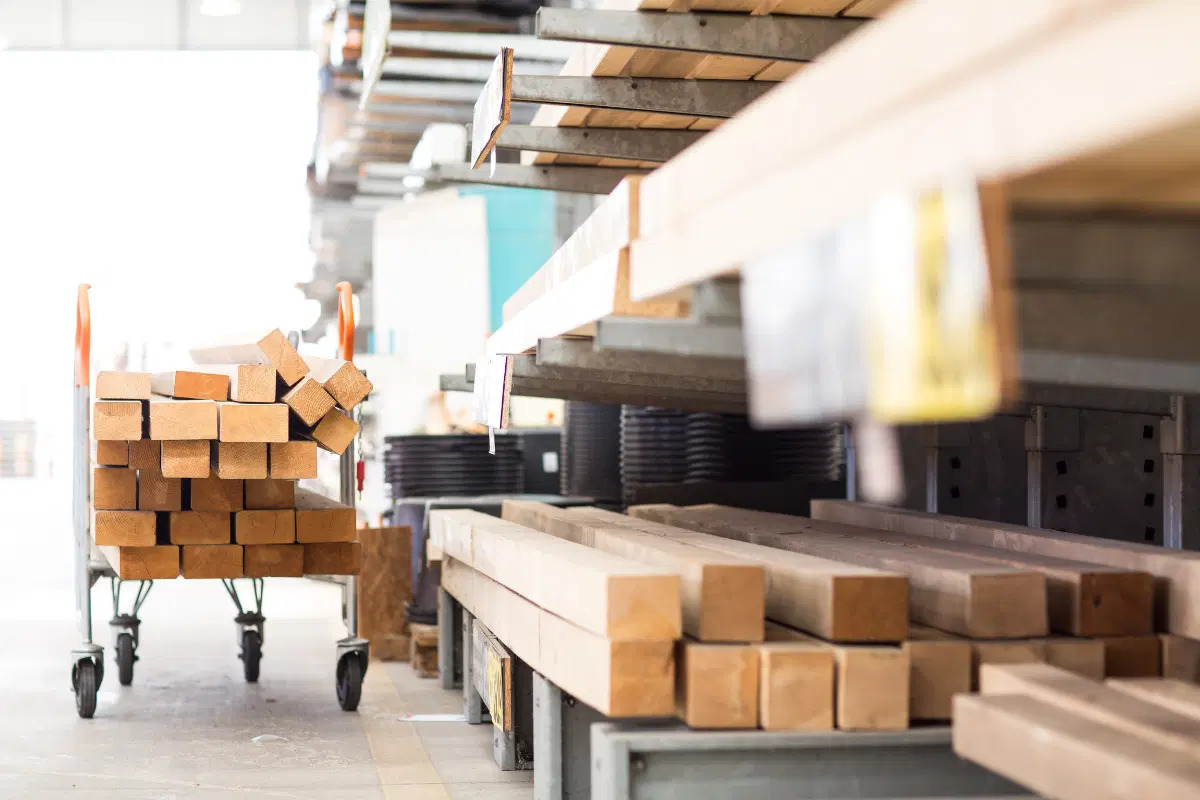

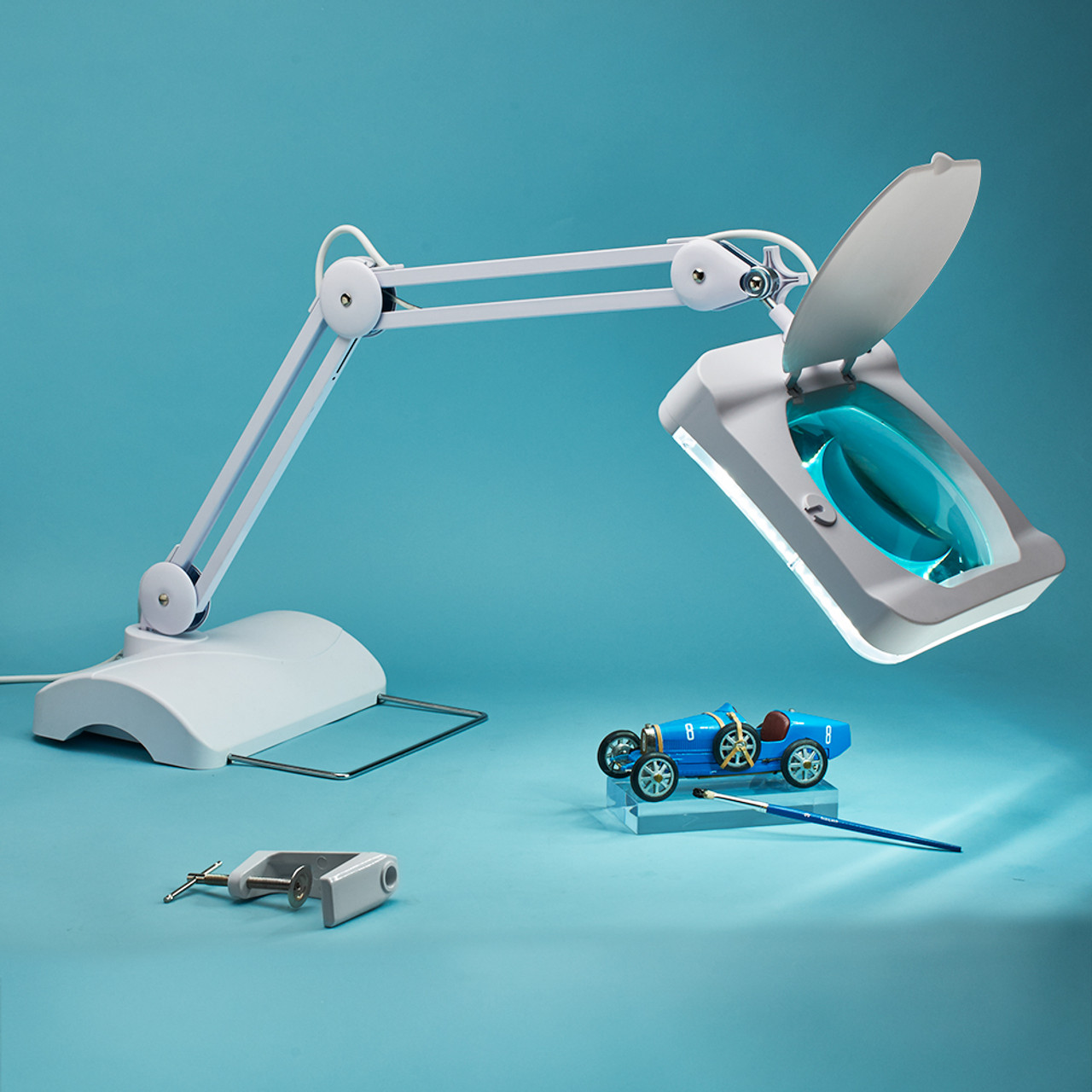
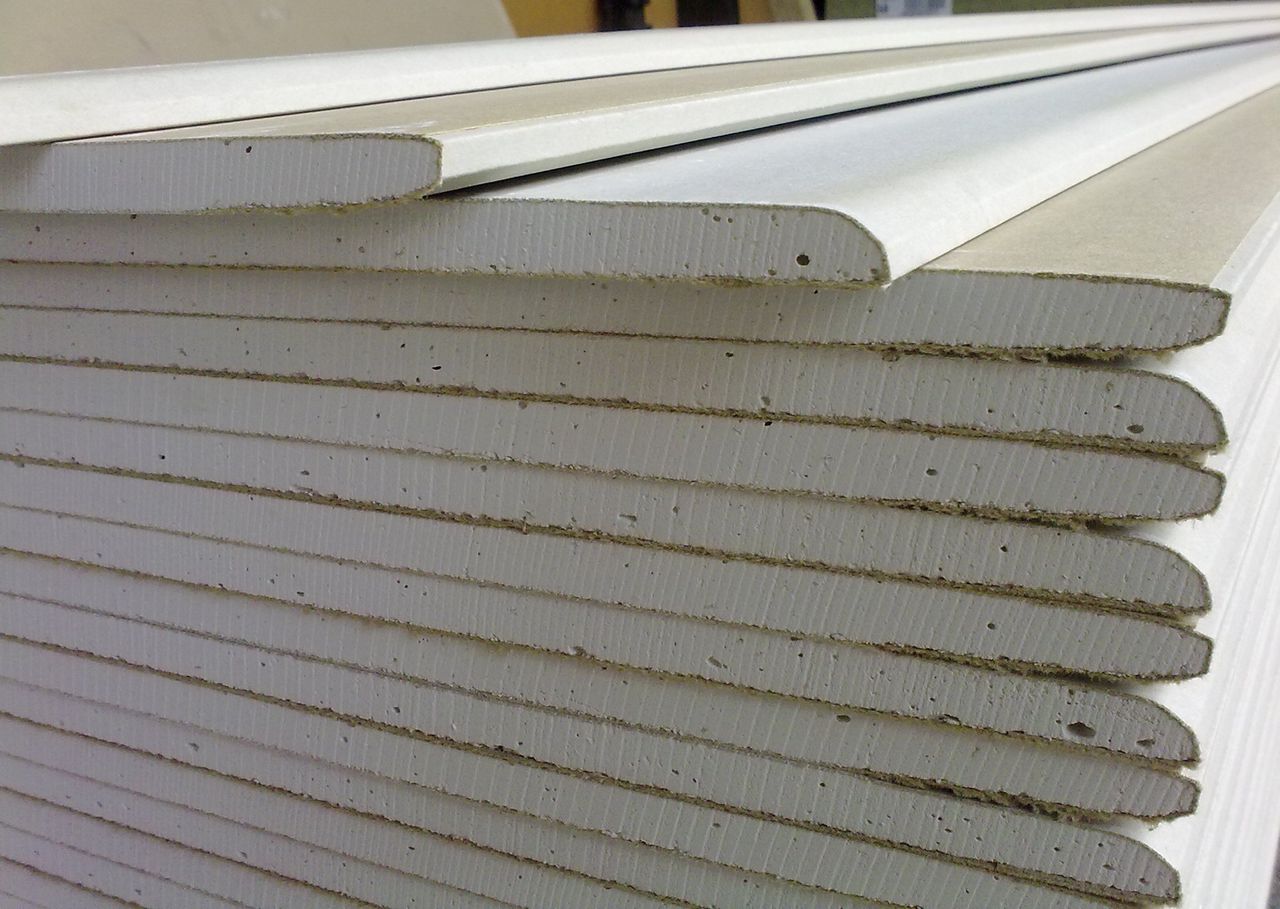
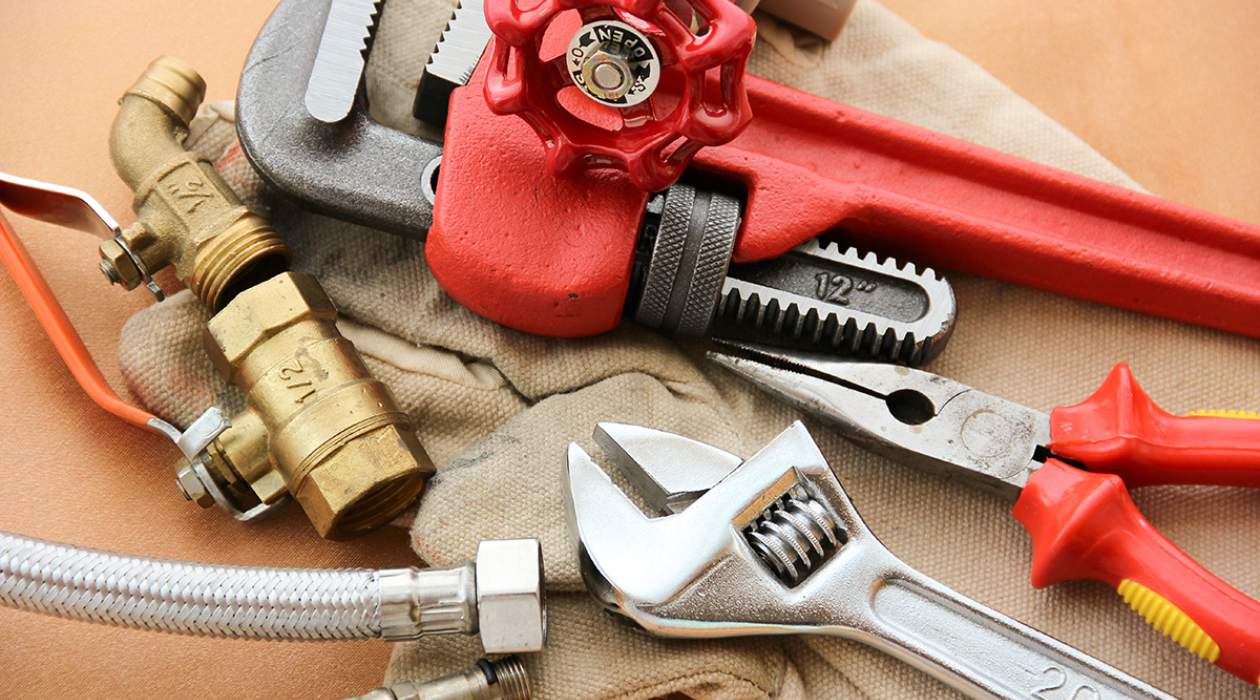

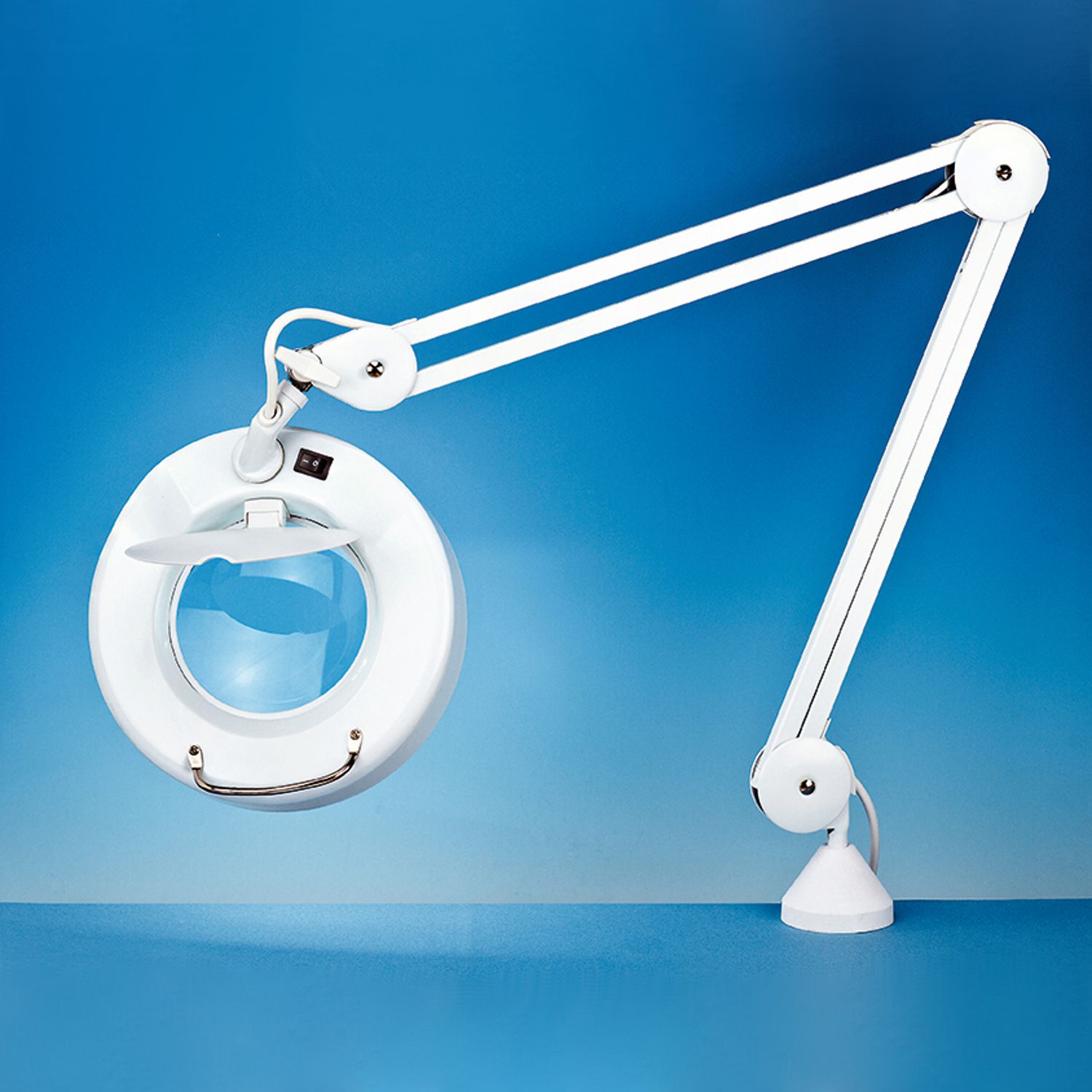
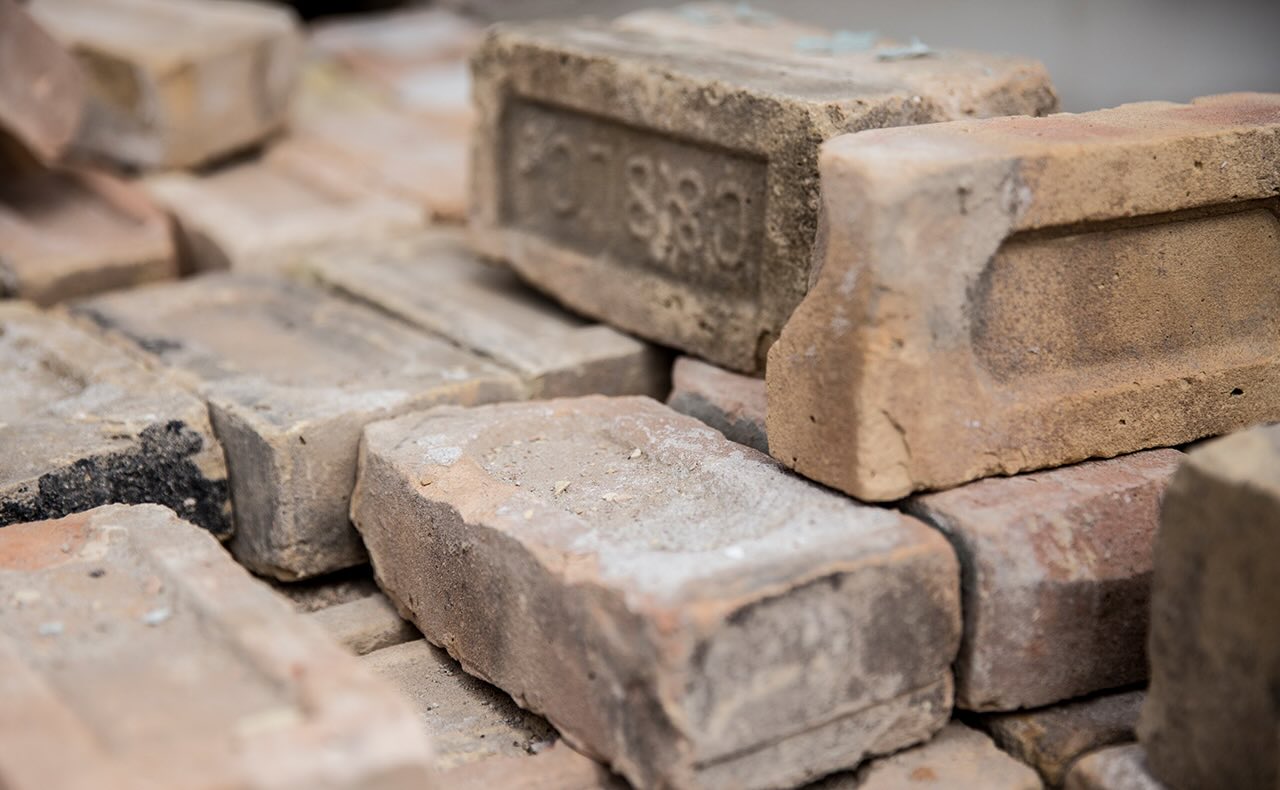
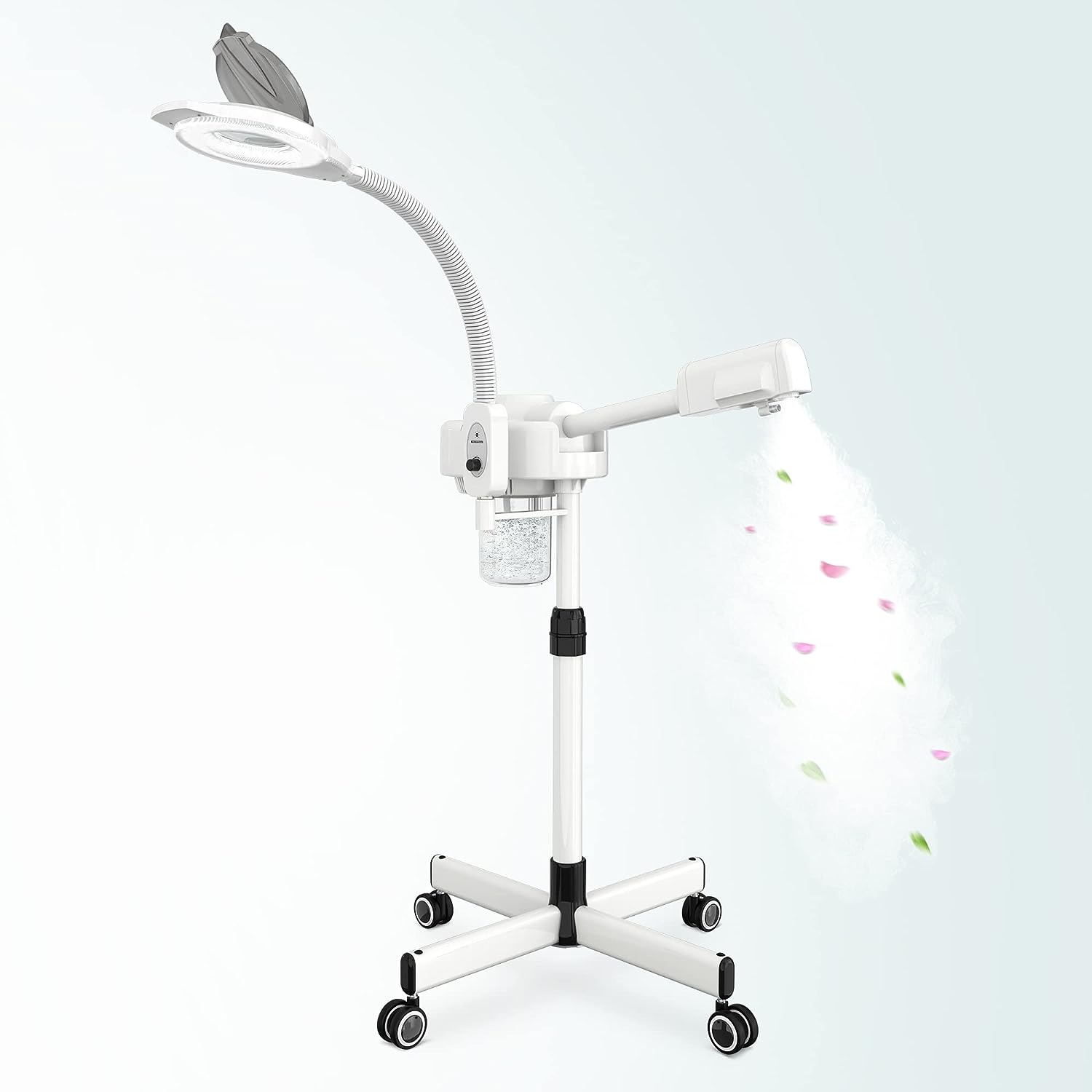
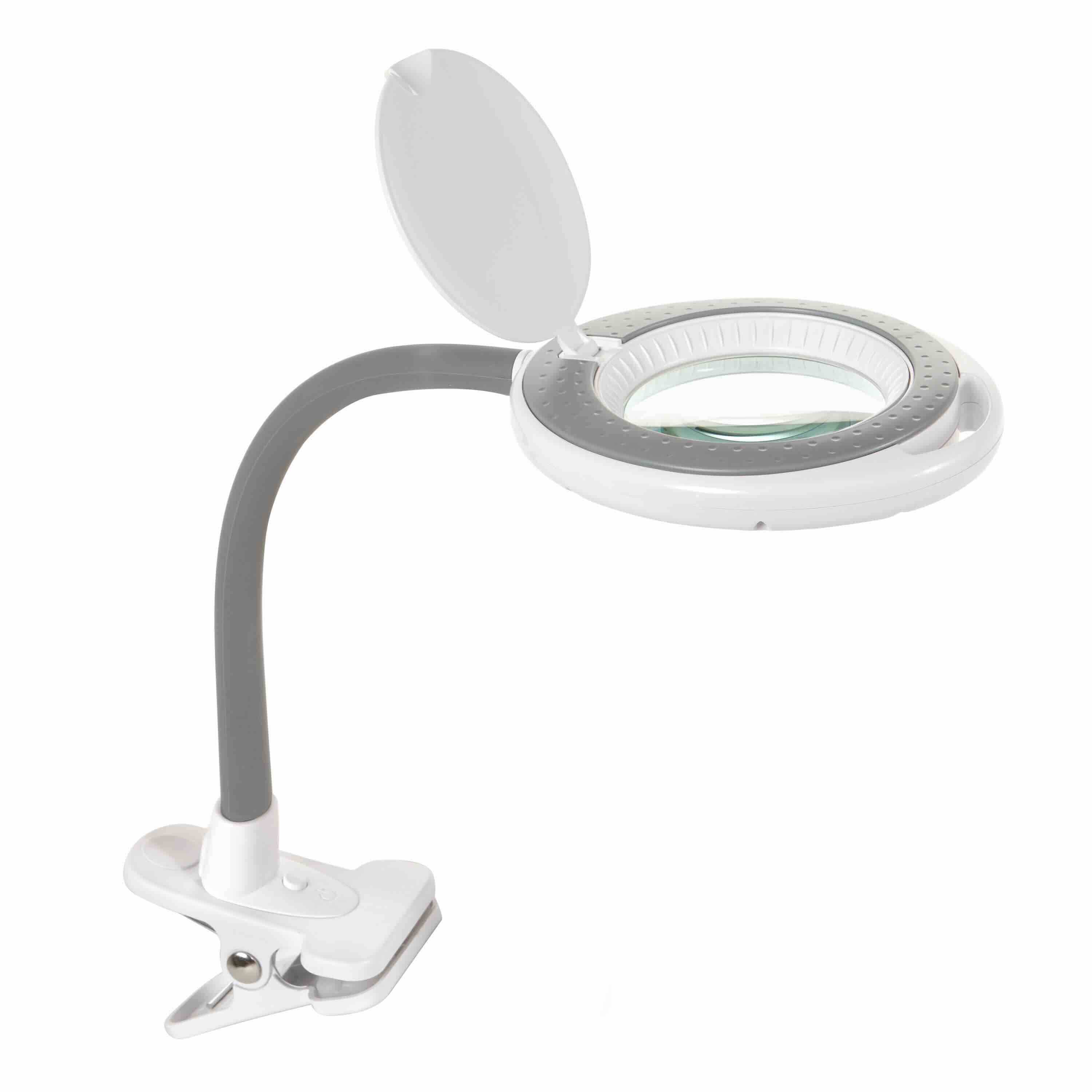

0 thoughts on “What Is The Most Common Magnifying Lamp Magnification?”